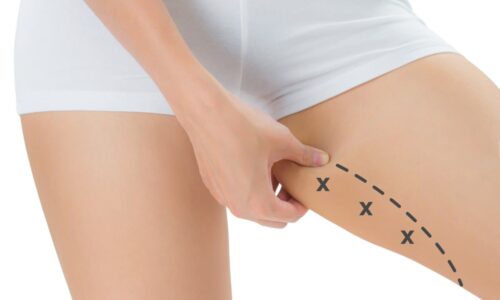Thigh Plasty in Mumbai - Sculpt Sublime (Plastic Surgery Clinic)

If you’re considering this procedure after weight loss, doctors recommend that you’re at a steady weight for at least 6 months and that you’ve already achieved your goal weight. This is because weight fluctuations can interfere with results post-thigh lift surgery.
What are the different types of thigh lifts?
Thigh lifts remove excess skin and fat, but there are different types that are achieved via different incisions. Your provider will help you choose the best surgery to meet your individual needs. Below are the different types of thigh lifts to consider.
Inner (medial) thigh lift
A medial thigh lift is the most common form of this cosmetic surgery. It addresses sagging skin in your inner thighs via an incision from your groin down toward your knee or toward the back of your thigh area.
Mini thigh lift
Depending on your individual needs, your surgeon may determine that you qualify for a mini thigh lift. This procedure requires fewer incisions than other types of thigh lifts, only involving an incision in your groin area. It works well if you’re wanting to focus on the upper-inner part of your thigh only.
Outer (bilateral) thigh lift
An outer thigh lift addresses the outside portions of your thighs. The procedure involves an incision that starts in you groin area, then extends outward to your hip and lower back area.
Vertical thigh lift
If you’re looking to address a lot of excess skin in all areas of your thighs, you may consider a vertical thigh lift. It requires larger incisions that extend down to your knees. However, due to a higher risk for complicationsTrusted Source, your surgeon may not recommend this type of thigh lift.
Lift with liposuction
In some cases, the thigh area may have poor skin elasticity. Your surgeon may recommend liposuction in addition to thigh lift surgery to help remove excess fat cells and prevent sagging skin.
What’s the procedure like?
Before thigh lift surgery, you’ll be instructed to stop taking medications that increase bleeding. These include aspirin, certain supplements, and anti-inflammatory drugs such as ibuprofen. Your surgeon may also ask for a medical evaluation to ensure you’re a good candidate for surgery.
You’ll be put under general anesthesia during the procedure. Your surgeon will make the appropriate incisions based on the type of thigh lift you’ve chosen. Then, they’ll cut out excess skin and fat cells before inserting sutures to close up your wounds.
On average, the entire procedure takes 2 hours to complete. Since you’ll also spend several hours in both pre-op and post-op, you should expect the entire process to take up most of the day.
It’s a good idea to have someone drive you to and from your operation and to stay with you overnight in case complications arise.
FAQs
What is done in plastic surgery?
What is the difference between cosmetic and reconstructive surgery?
Cosmetic surgery is performed to reshape normal structures of the body in order to improve appearance and self-esteem. Cosmetic surgery is usually not covered by health insurance because it is elective.
Reconstructive surgery is performed on abnormal structures of the body caused by congenital defects, developmental abnormalities, trauma, infection, tumors or disease. In general, reconstructive surgery is performed to improve function, but may also be completed to approximate a normal appearance.
Reconstructive surgery is typically covered by most health insurance policies, although coverage for specific procedures and levels of coverage may vary greatly.
If I have Botox or Restylane, how often would I need to repeat the injections?
Botox lasts about three to four months, and the treatment can be repeated as needed. When it wears off, you will begin to notice increased muscle action and some reformation of the wrinkles. It appears that with repeated use, the effect of Botox becomes longer lasting.
Restylane injections last for about six months, and can also be repeated as needed.
How do I know what size breast implant is right for me?
The decision is based on a number of factors, including the patient’s desires, reasons for the surgery and overall health.
For example, are you doing it because you feel your breasts are too small relative to your body contour or are you unhappy with the size and firmness of your breasts following pregnancy, breastfeeding or major weight loss? Unevenness between the breasts can also be a motivating factor. Your surgeon can help you make the right decision during your pre-surgical appointment(s).